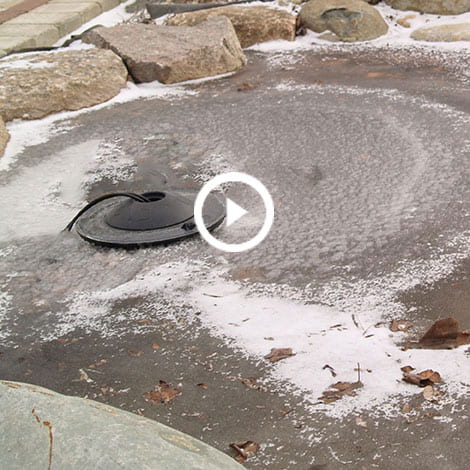Asked By: Maggie, Carlisle, PA
A: When frigid weather persists for days on end – like those way-below-zero temperatures – a pond can completely freeze over, even if a higher-watt de-icer and aerator are used. The ice-melting combination works great in most scenarios, but it just can't keep up in extreme conditions.
Do keep in mind that pond
de-icers are not meant to thaw the entire pond's surface or heat the water. Their primary purpose is only to keep a hole in the ice to allow gas to escape. With that said, if your pond has been totally frozen over for a day or so, your fish will be fine. But if it has been more than a few days or weeks, your pond pals could be at risk of oxygen deprivation or overexposure to dangerous gases trapped beneath the ice.
So what do you do?
Let's start with what not to do – and that's to try to smash the ice with a chisel or blunt object. The sound and vibration of that pounding on the ice amplify underwater, which can stress out your fish. They're already unhappy, and so you certainly don't want to make them endure more trauma!
Instead, use a pot of hot water to melt away the ice. If it's particularly thick, you might need to repeat the process several times to open a complete hole in the frozen stuff. While the temperatures remain frigid, check on the pond every few days to make sure the hole is still open; if it freezes over again, use hot water to open the hole back up.
With several more months of winter ahead of us, it's not too late to add a de-icer to your pond if you don't already have one. Simply place a unit, like the
Pondmaster 120-Watt Floating Pond De-Icer, on the ice and turn it on. It will heat up and melt through the ice – as long as temperatures aren't too extreme! For an extra boost, pair your de-icer with an aeration kit. The bubbling action also disrupts ice formation and even if the pond's surface is covered with ice, an aeration system will still deliver oxygen into the pond.
Last Updated: August 11, 2023

